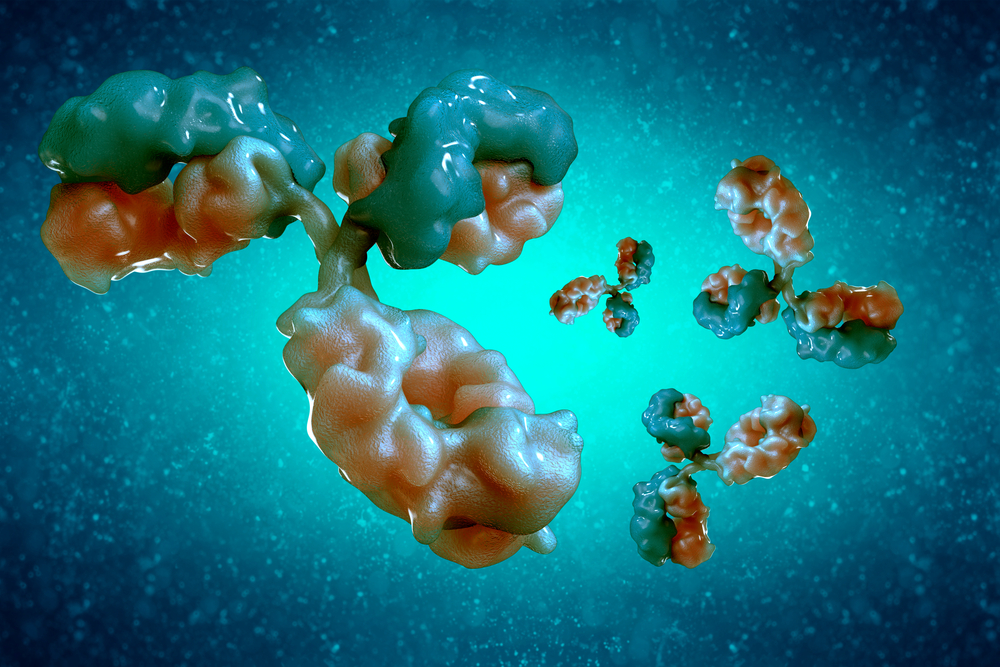Reactivity testing was carried out by indirect fluorescent-antibody (FA) at 10 µg/ml.
Mouse Anti-Rhinovirus VP3 Antibody (4967)
Price range: $454.04 through $1,139.31 excl. VAT
Mouse Anti Rhinovirus VP3 monoclonal antibody (4967) is specific for the VP3 of numerous Rhinovirus types. The antibody is suitable for ELISA and IFA applications.
MOUSE ANTI-RHINOVIRUS VP3 ANTIBODY (4967)
Mouse anti Rhinovirus VP3 antibody (4967) is specific for the VP3 of numerous Rhinovirus types. The antibody is suitable for enzyme immunoassay (EIA) applications.
PRODUCT DETAILS – MOUSE ANTI-RHINOVIRUS VP3 ANTIBODY (4967)
- Mouse anti Rhinovirus VP3 (4967) monoclonal antibody.
- Not reactive with other Enteroviruses (5), Influenza A, Influenza B, RSV, Adenovirus, Para 1, Para 2, Para 3, Chlamydia pneumoniae, Mycoplasma pneumoniae & Hepatitis A virus.
- Suitable for use in ELISA and IFA applications.
- Purified by Protein G Sepharose chromatography.
- Presented in phosphate buffered saline, pH 7.1, 0.1% sodium azide.
BACKGROUND
Rhinoviruses (RV) belong to the family Picornaviridae and are divided into three species namely, Rhinovirus A, -B and -C, which are antigenically diverse. Genetic recombination is found to be one of the important causes for diversification of Rhinovirus species. They are the most common viral infectious agent in humans and the predominant cause of the common cold. Rhinoviruses are responsible for upper respiratory tract syndromes and lower respiratory tract symptoms and are an important cause of asthma exacerbations in school-aged children. They also appear to play a role in exacerbations of cystic fibrosis in children and of chronic bronchitis in adults (Turner R.B., 2007).
There are three species of rhinovirus (A, B, and C) which include around 160 recognized types of human rhinoviruses that differ according to their surface proteins (serotypes). They are positive-sense, single-stranded-RNA (ssRNA) viruses of approximately 7,200 bp. The viral genome consists of a single gene whose translated protein is cleaved by virally encoded proteases to produce 11 proteins. Four proteins, VP1, VP2, VP3, and VP4, make up the viral capsid that encases the RNA genome, while the remaining non-structural proteins are involved in viral genome replication and assembly. The VP1, VP2, and VP3 proteins account for the virus’ antigenic diversity, while VP4 anchors the RNA core to the capsid. The viral particles themselves are not enveloped and there are 60 copies each of the four capsid proteins, giving the virion an icosahedral structure.
Serotypes of Rhinovirus A and -B species have been classified based on their receptor specificity into major and minor receptor group viruses. The major receptor group viruses use intracellular adhesion molecule-1 (ICAM) receptors. The minor receptor group viruses use members of low-density lipoprotein receptor (LDLR) family for entry into the host cell. Twelve serotypes of Rhinovirus A (HRV-A1A, -A1B, -A2, -A23, -A25, -A29, -A30, -A31, -A44, -A47, -A49 and -A62) belong to the minor receptor group of viruses. The remaining serotypes of Rhinovirus A as well as all the serotypes of Rhinovirus B belong to the major receptor group (Waman et al., 2014).
There are currently no approved vaccine or antiviral agents for the prevention or treatment of RV infection. Vaccine development has proved difficult due to the high number of RV serotypes which have high-level sequence variability in the antigenic sites (Jacobs et al., 2013).
The Native Antigen Company has created a range of enterovirus reagents to help researchers develop better serological testing methods for the diagnosis of enteroviral diseases.
REFERENCES
- Jacobs et al. (2013). Human Rhinoviruses. Clinical Microbiology Reviews (1) 135-162.
- Turner R.B. (2007). Rhinovirus: More than Just a Common Cold Virus. The Journal of Infectious Diseases, Volume 195, Issue 6, Pages 765–766.
- Waman et al. (2014). Population Structure and Evolution of Rhinoviruses. PLoS ONE 9(2): e88981.

